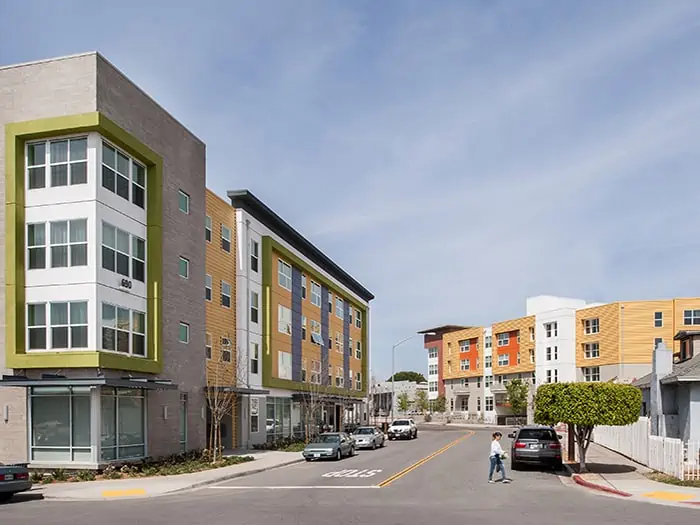


The construction cranes dotting suburban and urban areas indicate many cities’ new residential, office, and commercial building developments. Mixed-use development continues rising in popularity; the pandemic accelerated a swing already in motion. But there are other factors at play here, and one may surprise you. Today, our blog discusses these two factors and how brownfield redevelopment can play a role in addressing both.
One: Sustainability
According to Architecture 2030, a non-profit, non-partisan organization established to transform the building sector away from being a major emitter of greenhouse gases, there is work to do. As with almost all industry segments, tracking and reducing their carbon footprint is considered an essential element of doing business. It’s important to Americans and shareholders.
Brownfield redevelopment presents adaptive reuse of existing buildings and properties and is a sustainable form of construction. Completing the due diligence and environmental studies associated with redevelopment shows brownfields can provide cost benefits from a development perspective and in excellent locations with existing infrastructure. The conversion of existing land or buildings, as opposed to new-build construction, is far more environmentally sustainable.
An EPA 2020 study examines and reports the environmental benefits that continue accruing when brownfield sites are redevelopment. The study finds that accomodating housing and job growth decreases the need for more roads and reduces emissions from commuting.
As population density increases, real estate prices continue to rise, and less land is available, mixed-use development is an economical choice for developers. It is also one of the best-case scenarios for end-users because it prioritizes practicality and sustainability. Many potential sites exist in desirable locations or emerging areas. They should be available below market value and may have been on the market for a long time. The development of Comm-22 is a great example of a mixed-use community. Businesses find brownfields attractive options because they are closer to their customers – good for business and the environment.
Two: Grant Programs and Offsetting Expenses
The U.S. Environmental Protection Agency has grant programs that can pay for the assessment and cleanup of brownfields, but these programs are only available to governmental and non-profit organizations. However, a private entity may be able to team with these eligible parties. The bipartisan Congressional action has delivered the single-largest investment in U.S. brownfields infrastructure. The Bipartisan Infrastructure Law invests more than $1.5 billion through EPA’s highly successful Brownfields Program.
In addition, grants are available from some state agencies and the private sector through EPA regional programs – these are most often found within the transportation sector. Your environmental engineer or consultant can help you find funding; the firms with comprehensive environmental services keep watch as substantial federal infrastructure funding trickles down to the states in 2022 and next year. Note that each grant program will have its eligibility criteria, but many of these are designated for mixed-use developments supporting
Obtaining a grant or loan with the help of a qualified environmental consultant or an environmental attorney can be the difference in acquiring, cleaning up, and redeveloping a property. The grants don’t typically cover all the costs associated with the necessary cleanups, but they can cover most of these costs.
A new property owner can obtain an environmental insurance policy to cover cleanup requirements, third-party claims for bodily injury and property damage, and associated legal expenses resulting from pollution or contamination. These insurance policies are available with various term lengths and deductible amounts to satisfy the concerns of lenders or equity investors.
Other solutions include “insurance archaeology” to find old insurance policies that may have coverage for “pollution conditions.”
Comprehensive Environmental Support Keeps Redevelopment on Track
Mixed-use development provides a healthy, safe place to work, play, and live along with job creation. The most important risk management strategy is to keep the project on schedule. Your environmental engineer and consultant have a thorough understanding of the environmental issues on the site and how those issues can impact your redevelopment plans and bottom line. It is critical to have environmental and legal support experienced in identifying, anticipating, and managing risks on brownfields.
SCS evaluates brownfields by performing a Phase I Environmental Site Assessment (ESA) first to study historic site information and previous uses. SCS will perform a Phase II study if the Phase I ESA identifies potential issues (known as Recognized Environmental Conditions). Phase II includes collecting and analyzing samples (i.e., soil, soil vapor, and groundwater) to assess whether environmental impacts are present. If enough sampling is completed, the extent of the impacts can be estimated.
SCS Engineers has a long and successful track record with brownfields projects. Our clients appreciate the security of having comprehensive and experienced professionals who lower their risk keeping projects on schedule, safely remediating in-situ that lowers greenhouse gas emissions and can provide cost savings.
With proper planning and the help of a qualified environmental consultant, the mitigation or remediation of impacts can be incorporated into the acquisition and development processes and result in a vibrant, profitable project that is protective of human health and the environment.
About the Author: Luke Montague is a Vice President of SCS Engineers and a Project Director. He is a Professional Geologist and licensed contractor with two decades of experience in environmental consulting, general contracting, commercial and residential development, and property and asset management. He has performed and reviewed hundreds of Phase I environmental site assessments (ESAs), and has completed subsurface investigations, human health risk assessments, removal action work plans, site remediation activities, geotechnical investigations, asbestos and lead-based paint surveys, and asbestos air monitoring.